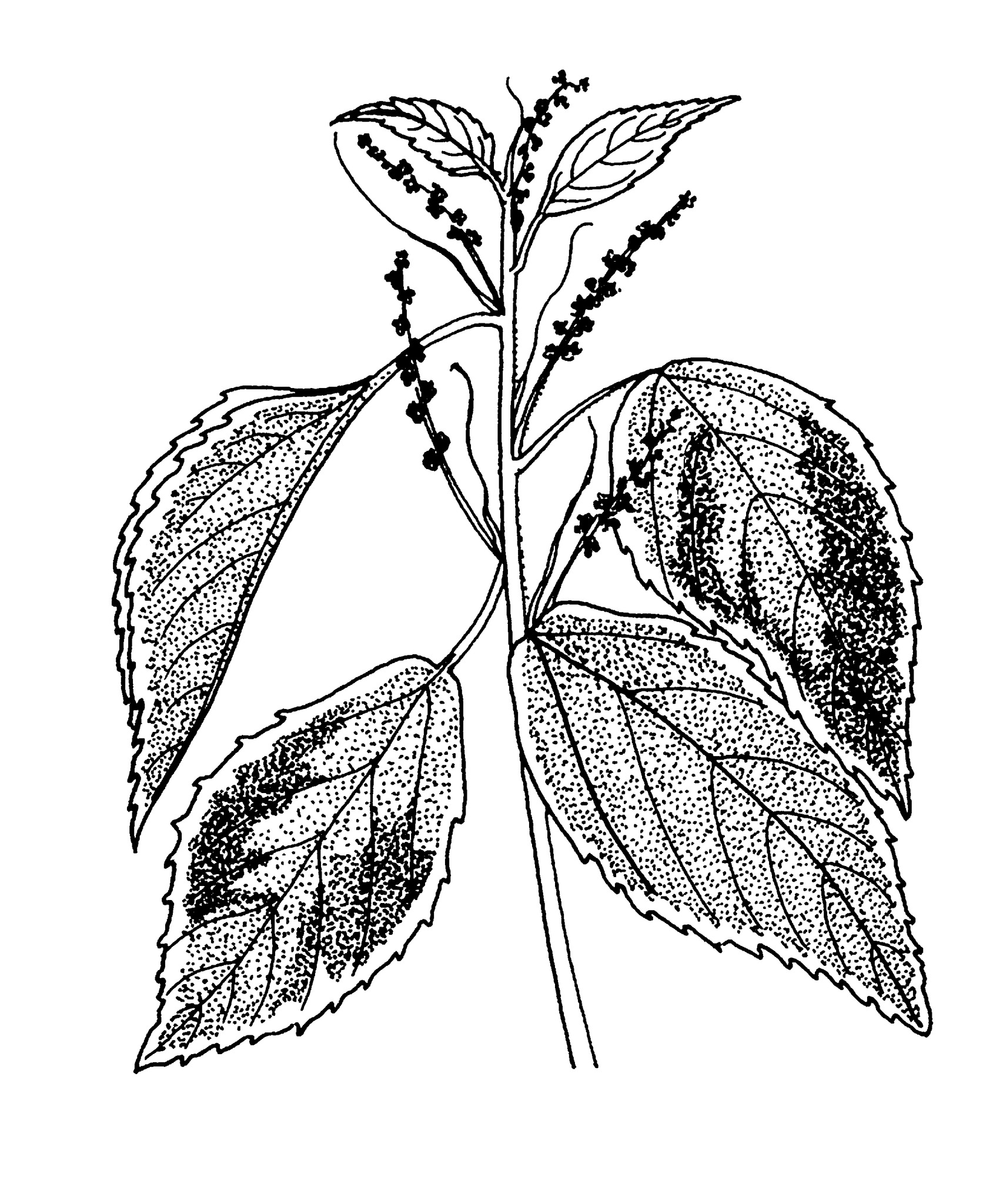
From the Greek acalephe, an ancient name used by Hippocrates for the nettle from a — not, kalos —pleasant, referring to the similarity between some species of Acalypha and stinging nettles.
Herbs, shrubs or small trees, annual or perennial; stems and foliage without latex. Indumentum of simple, rarely star-shaped, multicellular hairs. Stipules entire, inconspicuous, soon shed. Leaves alternate, stalked, unlobed, palmi- or penninerved; margins entire or denticulate to saw-toothed. Inflorescences terminal or axillary, racemose, spike-like or paniculate, solitary or paired, uni- or bisexual and androgynous, with the flowers in bracted clusters with a single involucre. Male flowers stalked; calyx lobes edge to edge, 4, partially fused; petals absent; disk absent; stamens 8-12, filaments free and attached to a slightly raised receptacle. Female flowers stalkless; calyx lobes 3-5, overlapping; petals absent; disk absent; ovary 2-3-chambered, ovules 1-2 per chamber; styles free or variously fused, usually laciniate, rarely entire or 2-lobed. Fruits capsular, dehiscent, 3-lobed, surface smooth. Seeds ellipsoid or roundish; carunculate and non-arilloid, or ecarunculate.
About 430 species, cosmopolitan, with 9 species in Australia.
Cuttings or rarely by seed.
Leaves simple, margins toothed; flowers small in catkin-like racemes or spikes.
Forster (1994a).
Source: (2002). Euphorbiaceae. In: . Horticultural Flora of South-eastern Australia. Volume 3. Flowering plants. Dicotyledons. Part 2. The identification of garden and cultivated plants. University of New South Wales Press.
